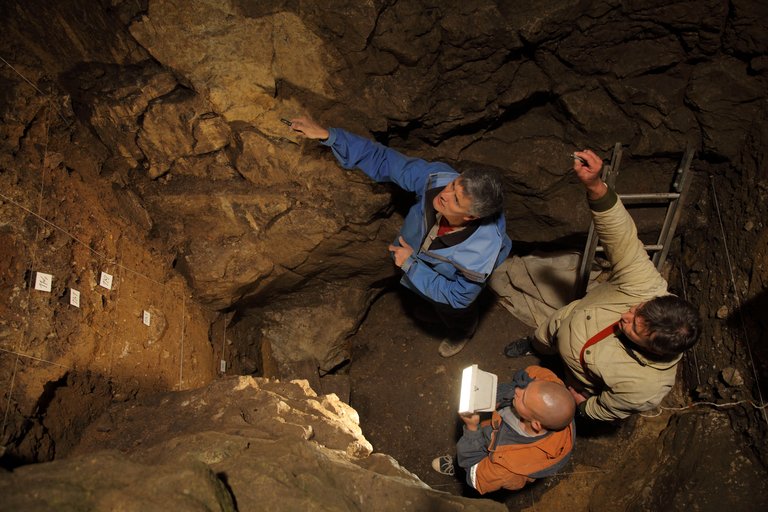A girl is identified with her Neanderthal mother and her Denisovese father

The genetic study of a fossil found in 2012 in the cave of Denisova (Altai Mountains, Russia) shows that the individual had parents of two different hominid groups: his mother was Neanderthal and his father was Denisovese. The study, carried out by the team of the researcher of the Svante Pääbo Max Planck Institute, has been published in the journal Nature.
The fossil is called Denisova 11 and is part of a long bone. With a direct radiocarbon dating they have discovered that it is prior to 50,000 years ago. In addition, measuring the cortical thickness, they have calculated that the individual was at least 13 years old when he died, and have discovered that he was a woman through a genetic study.
To know its origin, the sequence of Denisova 11 has been contrasted with the genetic data of a Neanderthal (Altaiko neandertala or Denisova 5) and a denisovar (Denisova 3) found in Denisova, and with the current African genome (Mbuti). It follows that the genetic contribution of Neanderthals and denisoveses is approximately equivalent. Researchers recall that these two hominid groups separated genetically more than 390,000 years ago.
Deeper studies have concluded that the mother of Denisova 11 was Neanderthal, but not the successor of the Neanderthals who lived before in the surroundings of Denisova, but that of the populations who lived in the West. His father was Denisovés, but he also had a Neanderthal ancestor who lived several generations before.
In the words of Pääävo, it is very rare to find a direct descendant between these two hominids, since although both groups lived for thousands and thousands of years at the same time, they covered different areas. Of course, although it was sporadic hybridizations, so far nothing like Denisova 11 has been found.
Buletina
Bidali zure helbide elektronikoa eta jaso asteroko buletina zure sarrera-ontzian










